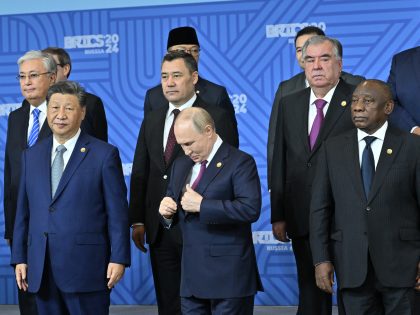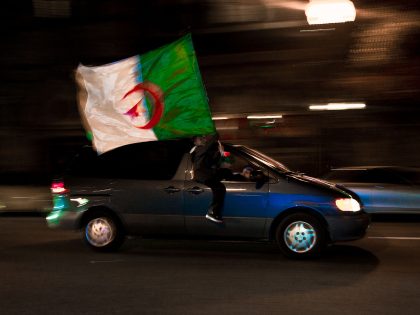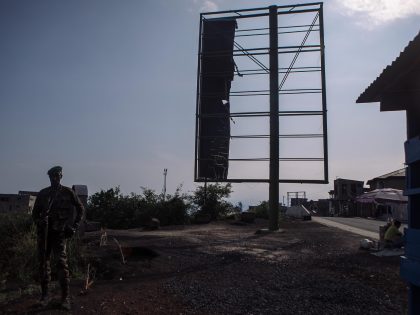The Politics of Spectacular Violence
The reactions to the Westgate Mall attacks in Nairobi makes clear the differentiation between human lives that are worthy of grief, and those that are not.
The masked gunmen who stormed Nairobi’s Westgate Mall on Saturday did one thing right. In targeting a site at the epicenter of elite consumerism in the upscale neighborhood of Westlands, they galvanized worldwide attention. As the mainstream media offers us a play by play of the unfolding hostage crisis, and as my Twitter and Facebook newsfeeds are flooded with declarations of anger and sorrow–sentiments I of course share–two things are apparent.
First, the extent to which the more privileged and educated segments of our world community find certain forms of violence in certain locales to be horrifying and objectionable. Second, the classed and racialized framings that shape our understandings of the issue at hand. Together, these notions work to differentiate between human lives that are worthy of grief, and those that are not.
What is it about the targeting of innocents on islands of privatized leisure like Westgate that strikes such a strong emotional chord across the world? Is it not that the majority of us who (have the ability to) log in every hour for updates see ourselves in the victims, knowing that we regularly occupy these very spaces?
Perhaps it is in this vein that we can make sense of the deafening silence in the context of the transnational plundering of neighboring Somalia—a country that readers of the New York Times and Kenya’s Daily Nation have been conditioned to see as representing the antithesis of liberal cosmopolitanism, as requiring external tutelage in the name of ‘peace and stability’, and whose ongoing destruction is more commonly understood as the work of Somalis themselves rather than the product of a complex assemblage of internal and external actors with competing political and economic interests.
How is it that the presence and violence of certain actors in the region–whether the Kenya Defense Forces (KDF) and its African Union ‘peacekeeping’ (AMISOM) partners in Somalia, or US and Israeli forces ‘advising’ the KDF in Nairobi–is normalized in our collective imaginaries as legitimate, while exceptional violence by non-state actors against upper-class Kenyans and expatriates triggers such immediate outcry?
Just three months after its invasion of Somalia in October 2011, the Kenyan military reportedly claimed the lives of at least 700 Somali ‘militants’. UN reports have documented black market sales by peacekeeping troops of arms intended for the Somali government to oppositional groups including Al-Shabaab, and Human Rights Watch reports of indiscriminate mortar and rocket attacks by AMISOM in civilian areas, leading not only to loss of life but also repeated displacement.
If up to 3,000 AMISOM forces have died since the peacekeeping operation was launched in 2007, one can only imagine what the number of Somali casualties might be. Our implicit acceptance of the ostensible humanitarian logic underlying such destruction amounts to what Talal Asad has referred to as the ‘etiquette of death dealing’, characterized by nods of regret for such ‘unfortunate’ loss of life.
Witnesses to yesterday’s attack in Nairobi reported that the suspects ‘looked like Somalis’ and ‘chanted Allahu Akbar as they entered the building.’ The spectral and racialized image of the terrifying Muslim (and explicitly non-Kenyan) Somali is here conjured once again to capture liberal anxieties, while the security apparatuses of Kenya, Israel and the United States are visually and rhetorically incorporated into cosmopolitan imaginaries of peace-keeping and secular diplomacy.
If we are to believe that the Westgate attack was the work of Al-Shabaab as the organization itself claims, does this not demand consideration that this weekend’s tragedy might be a political response to a transnational project of state-sanctioned violence in neighboring Somalia? Is it not Somalia that has been the epicenter of a ‘war zone’ and not Westgate mall, as the New York Times claims?
Given the amplified surveillance and suspicion of Kenya’s Muslim minorities since 9/11, one can’t help but dread how widely the tentacles of this war zone will extend, whether onto the streets of Mombasa or into the homes of Eastleigh. The targets of ‘just’ violence deemed so integral to secular modernity will be lucky to garner an ounce of the empathy we have all expressed in response to the tragedy at Westgate.



















